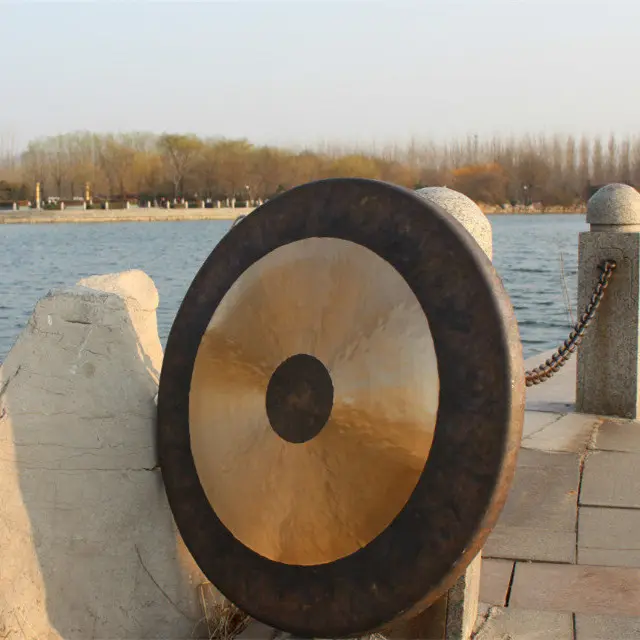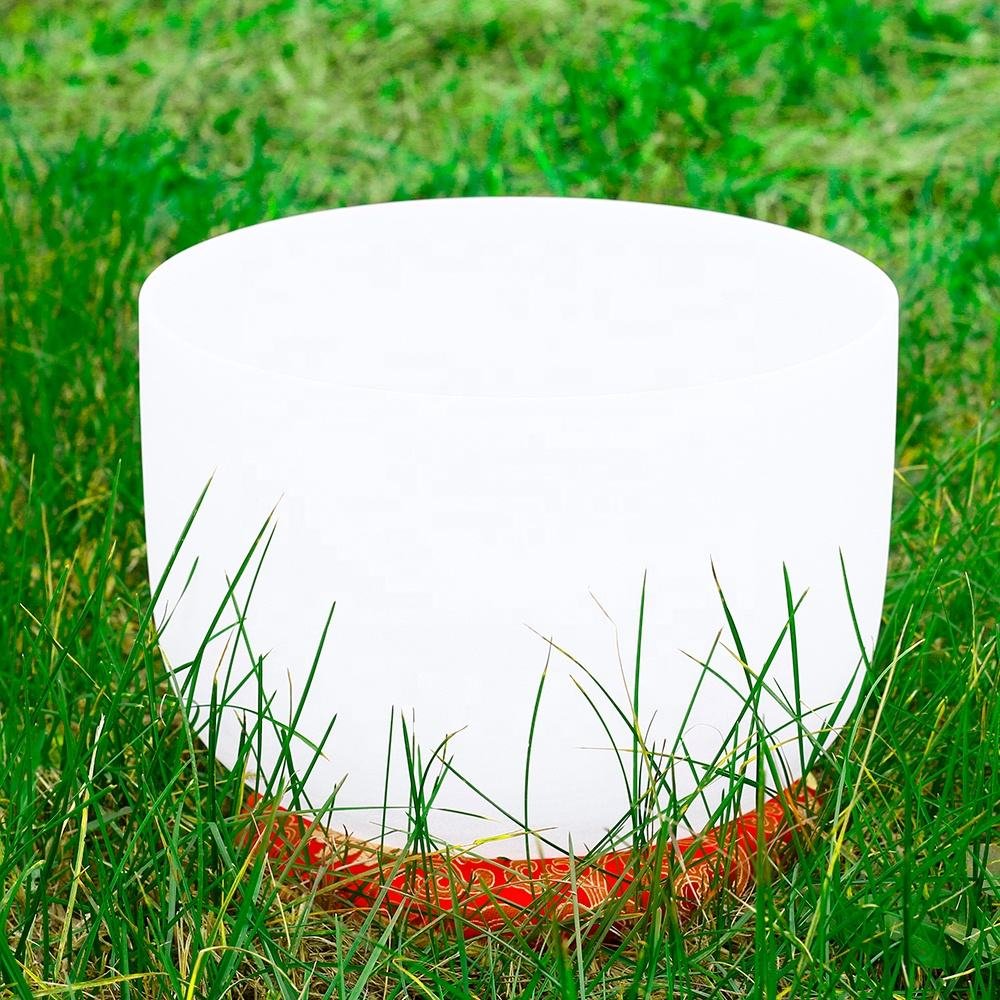
Chau Gong
Feature
Material: Chau gongs are typically made of copper-based alloys, bronze, or brass These materials contribute to the gong’s unique sound characteristics.
Shape: The chau gong is almost flat, except for the turned-up rim, which creates a shallow cylinder. This shape allows for the production of a distinctive sound when struck.
Sound: The chau gong produces a big, deep crash sound with a rich and complex range of low tones. When played, it can create a balanced crash and a clear fundamental tone. The sound of the chau gong is often described as bell-like and historically significant .
Craftsmanship: Chau gongs are carefully crafted using centuries-old traditions. They are hand-hammered and hand-polished to achieve the desired quality and characteristics. The craftsmanship of chau gongs is often associated with the Shandong Province of China .
MOQ
3-10 pcs
- 40+ Years of Experience
- Personalized move planning
- Full-value Damage protection
- 24/7 Availability
Quality of the Chau Gong
| Model | Supply Ability/Month | MOQ | Unit |
| 10’’ CHAU GONG | 2000 | 10 | Pcs |
| 12’’ CHAU GONG | 2000 | 10 | Pcs |
| 14’’ CHAU GONG | 2000 | 10 | Pcs |
| 16’’ CHAU GONG | 1000 | 10 | Pcs |
| 18’’ CHAU GONG | 1000 | 10 | Pcs |
| 20’’CHAU GONG | 1000 | 10 | Pcs |
| 22’’CHAU GONG | 1000 | 10 | Pcs |
| 24’’CHAU GONG | 1000 | 10 | Pcs |
| 26’’CHAU GONG | 1000 | 10 | Pcs |
| 28’’CHAU GONG | 1000 | 10 | Pcs |
| 30’’CHAU GONG | 1000 | 10 | Pcs |
| 32’’CHAU GONG | 1000 | 10 | Pcs |
| 34’’CHAU GONG | 1000 | 10 | Pcs |
| 36’’CHAU GONG | 1000 | 10 | Pcs |
| 38’’CHAU GONG | 1000 | 10 | Pcs |
| 40’’CHAU GONG | 1000 | 10 | Pcs |
| 43’’CHAU GONG | 1000 | 10 | Pcs |
Start Your gong Now
Contact: Shann
WhatsApp: +86 150 222 73745
Mail: gm@dorhymi.com

Application of Chau Gong
Orchestral Performances: Chau gongs are frequently used in orchestral settings, particularly in percussion sections. They provide deep, resonant tones that add a dramatic and dynamic element to the overall sound. Chau gongs are often played during crescendos or climactic moments in compositions.
Meditation and Sound Therapy: The rich and enveloping sound of the chau gong is utilized in meditation practices and sound healing sessions. The deep vibrations produced by the gong help create a calming and immersive auditory experience, facilitating relaxation, mindfulness, and inner exploration.
Spiritual and Ritualistic Events: Chau gongs hold cultural and spiritual significance in certain traditions. They are used in various ceremonies, rituals, and spiritual practices to invoke a sacred atmosphere and mark important moments. The reverberating tones of the chau gong are believed to facilitate spiritual connection and create a sense of transcendence.
Contemporary Music and Recording: Chau gongs are also employed in contemporary music production, including genres like ambient, experimental, and world music. Their unique tonal qualities and ability to create a wide range of sounds make them a versatile instrument for adding texture and depth to compositions.
Decorative and Display Purposes: In addition to their musical applications, chau gongs are often appreciated for their aesthetic qualities. They can be displayed as decorative pieces in homes, studios, or cultural institutions, serving as symbols of cultural heritage and artistic expression.
Directly Supply Chain
We prioritize a streamlined process and flexible operations. We’ll make sure to deliver your products at the appointed time and with the specified specifications.
Flexible financial Policy
We promise no pressure marketing campaign, our financial policy is customer-friendly, and we will work with you to establish your financial goals.
Guaranteed logistics packaging
All our logistics processes are thoroughly streamlined and adaptable. We will make a point to deliver at the time and venue as agreed upon. Our packaging has been repeatedly tested for high space utilization and safety
Interested in all meditation insturments ?
Request A Free Quote / Product Catalog
Sound healer say
Dorhymi often collects input from sound healers, music educators on social media to improve the details of the production process!

Codey Joyner
Sound healer
It wasn’t until 2022 that I found this site for sound healers and music lovers, I would say here anyone can get what you want, I can share more of my experiences with Shann, from here I also learned about the factory production process, that was fun!

Eren Hill
I love handpan, it has made a lot of difference in my life, as a hobby and as a business, and the handpan Dorhymi supplies is unique.

Emanuel Sadler
music educator
Music is a common topic of communication for people all over the world, and it’s clear that Shann and I agree. We have a lot of similar experiences. Follow the article each week to share.
Opportunity to make suggestions and share your work
You can contact us by email to leave your valuable comments or share your work for more exposure, all the works will be shown in the gallery once admitted
You ask, we answer
Dorhymi is dedicated to summarizing all the knowledge about gong. For more sharing, please follow our blog!
A chau gong is a large, Chinese percussion instrument made of brass or bronze. It has a distinctive sound that is often used to punctuate performances in genres like traditional Chinese music, theater, and opera. The instrument is also known for its ceremonial use in the military and at Buddhist temples.
The instrument dates back to the 15th century and was traditionally played by an ensemble of two or three musicians using different-sized mallets to achieve different sounds. The shape of the chau gong resembles a flat disc with a raised central boss that produces bright tones when struck with the mallet. Different sizes and thicknesses will affect how each gong sounds, allowing for various dynamics within an arrangement.
Today, a chau gong can be found in many performance settings due to its unique sound qualities.
Wind gongs and Chau gongs are two percussion instruments with a long history in the musical world. The two are often confused for one another due to their similar sounding names and similar shape, but there is actually a distinct difference between them.
The wind gong produces a sustained sound when it is struck, while the Chau gong produces a single pitch note that quickly decays after being struck. Wind gongs typically have an oval or circular shape, while Chau gongs have an octagonal or hexagonal shape. Wind gongs can be made of metal or wood and come in different sizes; they are most commonly used as part of traditional Chinese music ensembles.
Get a free quote now!
Super simple, tell us the required size, tone, quantity and we will quote within a day



